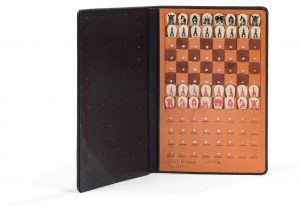A Painting by Chu-Teh-chun from 1984 Never Before Seen on the Art Market
Published on

Acquired from the artist's studio in 1985, this large canvas epitomizes Chu Teh-chun's mature period, when his depictions of nature reveal their most beautiful flights of color. Chu Teh-chun (1920-2014) Irisation saturation 1, 1984, oil on canvas signed, dated and titled, 103 x 84 cm/40.55 x 33 in.Estimate: €80,000/120,000 The tumultuous beauty of nature imposes itself on our eyes. We find ourselves immersed in cloud curls, morning mists, buffeted by wind. Atmospheric elements animate Chu Teh-chun's paintings. Already during his formative years, mentored by such great artists as Pan Tianshou, Zhang Guang and Li Kuchan at the Hangzhou Fine Arts School, he understood the










